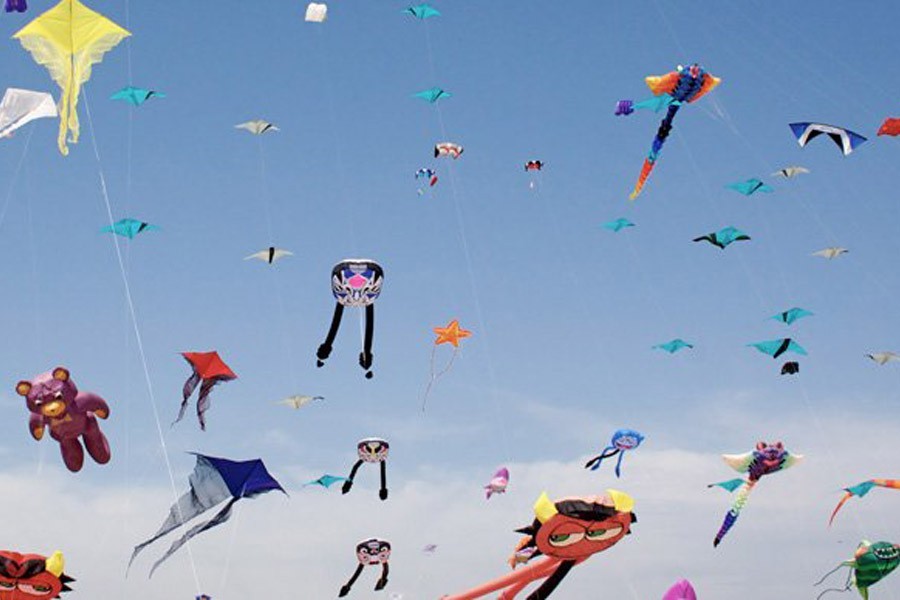
Published :
Updated :

Just a few days back, Dhaka city's older part was engaged in day-long celebrations on the occasion of the annual 'Sakrain' festival. It is normally held on the last day of the winter month of Poush. Sakrain has been witnessing the kite-centred festivities for over a century. Since it is a Dhaka-based festival, and a large portion of the city of that time now falls in the older part of the capital, Sakrain is generally considered an old-Dhaka festivity. But in the 1950s and the 1960s, the sky above many areas in the 'new Dhaka' would be found filled with kites. In the city part on the south of the then Nawabpur rail crossing, lower-middle and middle class boys and youths would be found filling the then abundant playgrounds. With a 'natai' and several kites in hand, they would be found moving from one spot to another --- intent on severing the thread of a kite, thus defeating the kite's owner.
Cutting the kite threads off by another kite fighter applying ingenious techniques used to play a dominant part of the game. There were kite flyers' groups in every neighbourhood in both parts of Dhaka. The relatively newer city, spacious vacant lots would be found lying for miles. During Sakrain, these spaces would attract hundreds of kite flyers, kite fighters and kite runners. A kite runner was actually an assistant of a fighter. His job was to pick the fallen kite before the defeated party could grab it.
On being declared the owner of the highest number of defeated kites, the champion was awarded the victory cup. In the olden days, kite competitions would often lead to small arguments and quarrels. Upon being joined by the local musclemen looking for broadening their spheres of influence, the small neighbourhood arguments would deteriorate into violent encounters. To the great relief of the elderly 'muhalla' guardians, the arguments would finally be prevented from flaring up further. Thanks to the festive environs filled with music, feasts and spraying of coloured powder, emotional outbursts could be managed to be confined to noisy crowds on rooftops. Due to fast urbanisation, residential roofs were chosen as ideal venues for flying kites from.
During the Sakrain days, colourful fighter-kites once filled the Dhaka sky. These days a similar view could be found in many Indian cities. They include Jaipur, Surat, Ahmedabad, Hyderabad etc. The highest numbers of kite festivals are held in Gujarat --- 200 in total. Compared to Dhaka's, the Indian kite festivals veritably involve the whole population of a city. In the Asian region, Japan, China and a lot of Southeast Asian countries observe their own kite festivals on different days. The kites of these regions do not engage in fights. Instead, they join a competition of flying large and fanciful kites. The shapes are also different from those flown in the sub-continent. Ranging from the shapes of eagles, dragons, snakes, crocodiles etc to humans, these kites give the sky a surrealistic look.
The Chinese have been flying kites since ancient times. The country has its largest kite museum in the Weifang city. There are such museums in Japan, UK, Malaysia, Indonesia, Taiwan, Thailand and the USA. Kite flying is one of the most leisurely pastimes. Apart from the kite-fights indulged in by the adolescents and youths,flying kites standing in a remote place provides one with abundant joy. Seeing a kite soar upward in a clear sky fills one with a cure-all or panacea derived from few earthly medications. The solitary kite flyers do not care for festivals or kite-fights. Unfortunately, kites are fast vanishing from the Dhaka sky.


 For all latest news, follow The Financial Express Google News channel.
For all latest news, follow The Financial Express Google News channel.